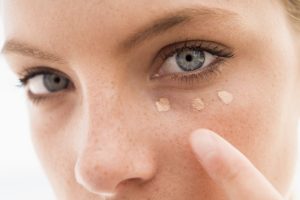Creating Effective Skin Care Cosmetics

When choosing skin care cosmetics, buyers often rely on the quality and effectiveness of the product before making a purchase. It’s worth noting that these concepts are quite subjective, as each consumer expects a specific effect on their skin, with varying degrees of intensity. skin care cosmetics can differ in functionality, which determines their action and the results of their usage. Accordingly, to achieve the desired effect, it is important to correctly select a product based on the needs of a specific skin type.
In this article, we will delve into the process of skin care cosmetics manufacturing, examine their functions and advantages, and finally discover what is required to create effective products that can satisfy consumers’ desires.
The Science behind Skin Care Cosmetics
The care of the skin can be rightfully called a whole science, as it involves a system of products designed to maintain the optimal condition of the facial and body skin. To understand how cosmetics affect the overall well-being of the skin, it is worth studying its anatomy, functions, and needs.
The skin is the largest organ of the human body. Functionally, the skin performs a number of different tasks in the body:
- Protects the body from damage, injuries, UV rays;
- Regulates body temperature;
- Facilitates the process of excreting metabolic waste through sweat;
- Maintains water-electrolyte balance;
- Responds to stimuli that cause pain and pleasure;
- Participates in the synthesis of vitamin D.
The skin consists of three main layers:
- The epidermis is the outer layer of the skin, which protects the body from external factors such as ultraviolet rays, infections, and moisture loss.
- The dermis contains collagen and elastin fibres, providing firmness and elasticity to the skin.
- The hypodermis, or subcutaneous adipose tissue, serves for thermoregulation and enhances cushioning.
Cosmetic products for skin care primarily act at the level of the epidermis. Such products can be safely used at home. Deeper-acting products that reach the dermis level are preferably applied in the office of a beautician or dermatologist to control the process.
When applied to the skin, the active components of cosmetic products begin to exhibit their properties, fulfilling one of the main tasks:
- Cleansing. Surfactants dissolve dirt, dust, sweat, and makeup residue, which are then rinsed off with water. Depending on the skin type, cleansing products are categorised by their application method: solid soap, gel, milk, foam, and cleansing cream.
- Moisturising. Products with hydrating components help retain moisture in the skin, preventing dryness and flakiness. Often, toners, mists, sprays, serums, gels, and creams are used for this purpose.
- Exfoliation. The skin has the ability to regenerate, renewing itself approximately once a month on average. However, sometimes this process slows down, resulting in dullness and skin stiffness. Exfoliating products help eliminate dead cells, renew the skin, and restore its fresh appearance. Scrubs, peels, serums, masks, foaming powders, lotions, and other products are used for this purpose.
- Nourishment. The skin needs nourishment with beneficial substances such as vitamins, amino acids, and trace elements. The most valuable vitamins for the skin are A, E, C, and F, while essential trace elements include selenium, zinc, copper, and others. Products containing these substances provide internal nourishment to the skin, making it soft and radiant.
- Fighting imperfections, such as wrinkles, acne, sagging, and skin dullness. Depending on the flaws affecting the skin’s appearance, an active ingredient in a cosmetic product is chosen. Typically, this includes acids, derivatives of vitamin A, peptides, and other substances.
Understanding the formulation of skin care cosmetics
The execution of the tasks listed above directly depends on the composition of the cosmetic product – it must correspond to the declared effects and combine both active and base components. The formulation is the formula for achieving the desired result, so it is worth understanding the significance of the components of cosmetic products.
Active substances exert a direct influence on the condition of the skin. They penetrate the epidermis and perform specific functions: cleansing, moisturising, nourishing, skin lightening, and some others. In current cosmetology and dermatology, the most effective active substances are considered to be:
- Retinol is a form of vitamin A that promotes skin cell renewal, improves texture, and stimulates collagen fibres.
- Hyaluronic acid is the best skin hydrator capable of increasing skin elasticity and reducing wrinkles.
- Alpha and beta hydroxy acids (AHA and BHA). Being good exfoliants, they remove dead cells and improve skin texture.
- Antioxidants, such as vitamin C, vitamin E, coenzyme Q10. With regular application to the skin, they protect it from the harmful effects of free radicals and help reduce signs of ageing.
Basic components are substances that create a favourable environment for the action of active ingredients. Water, alcohols, and vegetable oils are added to the composition for dissolving and combining individual ingredients.
Additional substances include emulsifiers, thickeners, and preservatives. These components are necessary in the formulation to create a consistency that is convenient for use and to extend the shelf life of the cosmetic product.
It should be noted that the formula of the product should not only include a maximum of beneficial substances for the skin but also combine them correctly. The greatest effectiveness is achieved when all individual components harmoniously interact with each other and are aimed at a common result.
Cosmetics manufacturing processes
Cosmetic products that consumers see on the shelves of stores and on website pages, go through a lengthy production process that can last for months or even years. Let’s find out the stages of production that need to be passed in order to obtain a quality product in the end.
- Formulation development entails determining the key properties of the future product, as well as the components that will be involved in its composition. The overall formula should be unique and practical for production.
- Blending of ingredients. At this stage, the active and base ingredients, emulsifiers, and preservatives are mixed in specific proportions to create a cohesive product. Some components of the product require heating for better blending and dissolution of individual constituents. Subsequently, the mixture is cooled, resulting in the final texture.
- Quality control. Various tests and evaluations are conducted during different stages of skin care cosmetics manufacturing to ensure the product’s stability and safety. This includes checking the compliance of ingredients, physicochemical properties, microbiological purity, and other parameters.
- Packaging and labelling. Once the quality control procedures are completed, the cosmetic products are packaged in appropriate containers and labelled for retail. A crucial aspect of packaging is its complete seal, user convenience, and adherence to preservation requirements.
In the end, after going through a whole range of manipulations, the product is determined to be safe and ready for use, after which it becomes available for purchase.
The role of innovation in skin care cosmetics
The skin care industry is experiencing vibrant surges of new trends and various transformations. Primarily, this is due to consumers’ desire to understand the factors influencing skin condition, comprehend the mechanisms of impact, and achieve healthy and beautiful skin with minimal effort.
Open platforms for discussions provide the freedom to express opinions about specific products, share results, or complain about unexpected effects. As a result, a high-quality cosmetic product quickly gains momentum and becomes widely known, unlike those with meagre ingredients that offer no benefits.
Thus, we can identify several current trends in the cosmetic sphere:
- The use of natural ingredients. Unfortunately, the terms “natural” or “organic” for cosmetic products are not regulated by European and US laws, which allows for some flexibility in ingredient selection. However, a cosmetics brand can obtain a certification attesting to the naturalness of its components. Such certifications include Ecocert, Soil Association, Cosmebio, ICEA, and BDIH.
- Environmentally friendly packaging. The most prominent example is the abandonment of plastic and non-recyclable materials. Switching to biodegradable packaging indicates that the brand cares about the environment and, consequently, its customers.
- Natural skin appearance. Many categories of makeup are now actively being replaced with skin care cosmetics. Caring for the skin yields longer-lasting results and requires less time for application. When the skin is healthy and radiates from within, it is better than the most exquisite makeup.
Conclusion
Cosmetic products are absolutely diverse in their functions and purposes. However, the foundation of effectiveness is always the composition, particularly its active component. Knowledge of the mechanisms of skin care cosmetics manufacturing will only help in clearly determining, through the product label alone, whether the product can improve the condition of the skin or not.
It should be noted that creating effective skin care cosmetics is a complex and multifaceted process that requires a deep understanding of skin science, innovations, and production processes. There is no one perfect product that suits everyone. The more specific and localised the product’s action, the better. Human skin is unique, and therefore, the approach to it must be aimed at working with specific characteristics and parameters. In such cases, the use of cosmetic products will be productive, and the results will be noticeable in the mirror on a daily basis.






